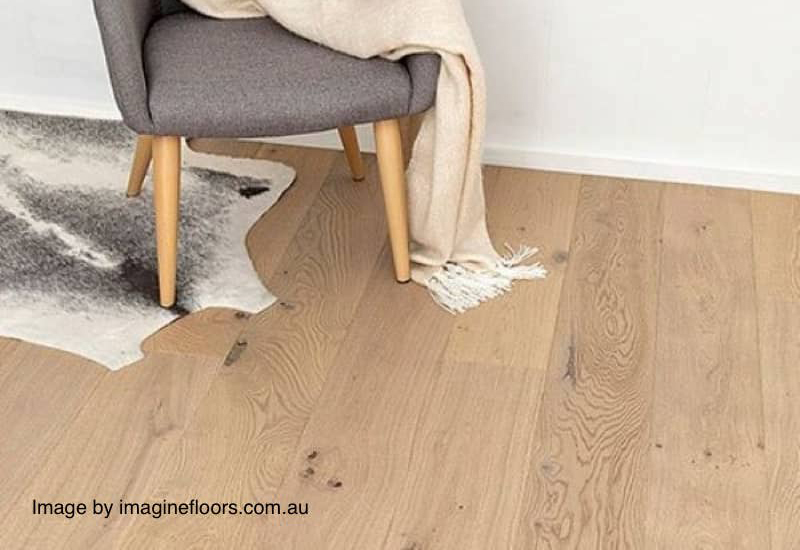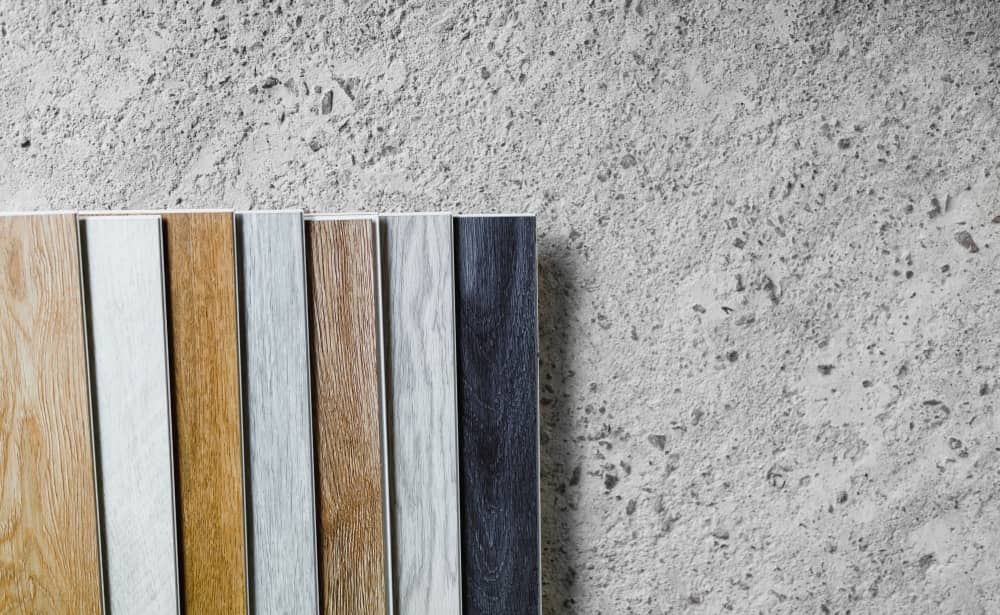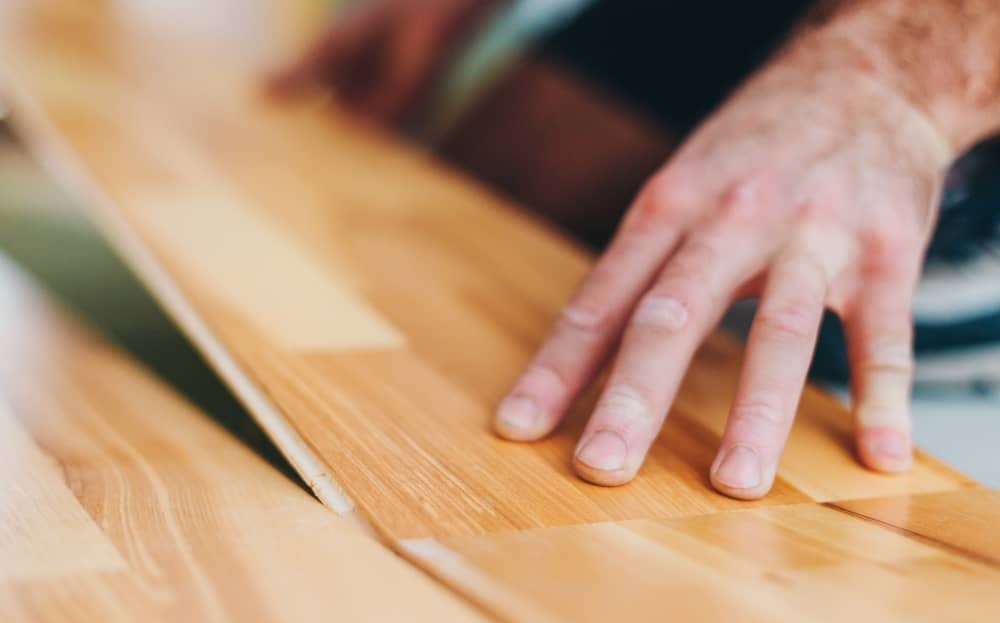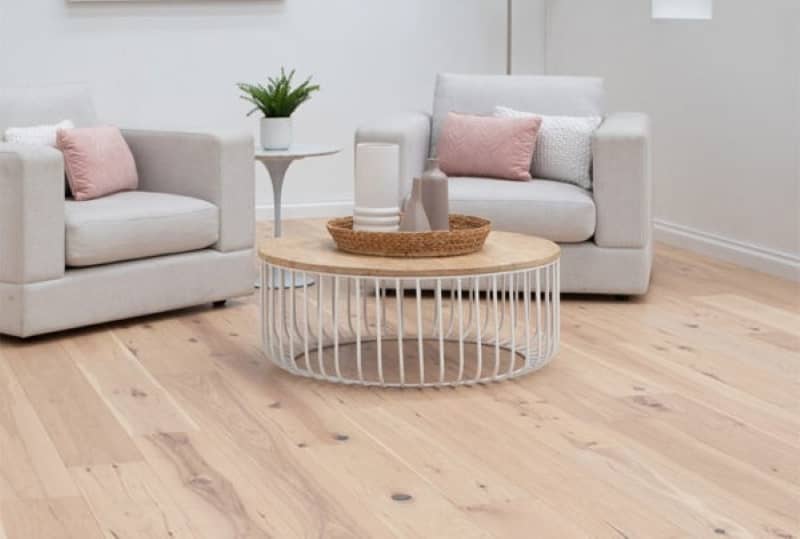Last edited: 1/5/2024
Floating floor installations have become more popular in homes and commercial spaces. Choosing the right floor can get a little complicated on it’s own. You have to determine the type, colour, structure, width and other measurements. Once you have chosen the floor, you will have to deal with the expenses and hassles of installation. It’s time-consuming and usually a costly process – except if your choice was a laying floating floorboards.
The popularity of floating floors is increasing for good reason. In this blog, we will discuss what a floating floor is, its pros and cons, and more. By the end you will know how to lay floating floors and know if they are right for your home.
Overview:
- What are Floating Floors?
- Pros and Cons of Floating your floor
- Types of Floating Floorboards
- Installation Process
- Should You Choose Floating Floors?
What are Floating Floorboards?
The term “floating floor” refers to the type of flooring that locks together like puzzle pieces. With these floated floors, adhesive or fixings do not hold the floor in place. They are held under their weight and ‘Float’ overtop of the subfloor.
Floating flooring involves planks (or tiles in some instances) interlocking edge-to-edge and end-to-end. The result is a single surface that sits on top of an underlay. The process differs from the nail or glue-down installation methods commonly used for timber, stone and ceramic tiles.
Hybrid, laminate, bamboo, and engineered floors can all be floated.
Laying Floating Floor Pros & Cons
Due to the ease and simplicity of installing floating floors, they are among the most popular options for DIY-ers when it comes to flooring. However, before you get excited and buy floating floorboards, you have to understand that the planks require a well-prepared subfloor and in some cases, you will require an additional underlay.
If you are not familiar with the term ‘Subfloor’, it is the ‘Floor’ upon which you lay your floor covering. You rely on it to give you a flat and stable surface. The ‘Underlay’ is the structure between the actual floor and the subfloor and it provides acoustic separation.
Let’s begin with the pros:
1. Floating Floorboards Cost
The costs are variable, depending on the quality and type of material you will use. But generally speaking, even if you hire a pro to install the flooring, you will still pay considerably less than hiring one for a glue- or nail-down floor. Floating floor Installation is much faster and easier, so you can save on labour money by DIYing.
2. Easy to Replace
Like any other type of flooring, damaged planks are inevitable as time passes. However, with floated flooring, you can replace damaged floorboards far more quickly.
Again, you can do this on your own because there are no nails or glue.
- Simply disassemble the floor up to the damaged board
- Substitute damaged planks
- Put the others back into place
3. How to Clean Floating Floorboards is Easy
However, remember that cleaning and maintaining the floating floor may have different procedures from product to product. Methods are governed by flooring type. For example, you can clean laminate or engineered timber with just a damp mop. Hybrid flooring can be fully wet mopped.
4. Floating Floorboard Installation is Quick and Easy
Regardless of the floating floor material used, we want to stress the importance of a good subfloor. Your subfloor should be as smooth and flat as possible. Manufacturer installation guides will tell you the allowed tolerance. If the floor is uneven, this can be felt underfoot and will damage any floating floor.
Once the subfloor is prepared, an underlay is usually applied. Hybrid flooring already has a built-in underlay, however, so there is no need for an additional layer of underlay.
Finally, you assemble the planks, ensuring they click together so that they stay locked in place. If you want to know the how-to or simply wish to envision how the installation process goes, you can find the steps later in this post.
Now, onto the cons:
1. This May Lower Your Property’s Value
Some people regard floating floors as inferior to nail or glue-down flooring. Perhaps in the past, we can all agree that this was true. However, floating floor technology has significantly evolved. The quality and design of the products have improved, making them an attractive option, even for the discerning homeowner.
However, this reputation remains. This flooring method may have a slight effect on the value of the real estate compared to other premium flooring options. If you are quite concerned about how your flooring lowers property value, you may want to consider engineered timber flooring or bamboo, as being natural products, there is no repeating pattern across your floor. However, the feel and sound of a floating floor remain.
2. Potential Hollow and Loud Sounds When Walking
Floated floor is not bonded to the subfloor and will sound hollow. Some people refer to this as ‘Click Clack’ flooring. Therefore, you can expect that the floorboards of lighter weight can give that hollow feeling as you walk on them. They can be loud underfoot particularly if you installed laminate, which is hard compared to other flooring. Different underlays can change the sound you hear underfoot, but they will not eliminate it. However, as with everything, one person’s whisper is another person’s scream.
3. Floating Floors Usually Cannot Be Refinished
Unfortunately, you cannot refinish most floating floors. Laminate and hybrid cannot be sanded and refinished because of the types of wear layers. However, they are much more durable than timber floors.
Bamboo flooring is not conducive to sanding and recoating because of the aluminium oxides used in coats. This typically makes them harder than most timber coatings, but their durability is still inferior to laminate and hybrid floors.
Engineered flooring can be refinished with difficulty. The timber veneer can be sanded and recoated multiple times. However not being bonded to the subfloor means that it can ‘bounce’ under the high-speed revolution of a poly-vac that is used to sander. This can leave radial marks on the floor known as ‘chatter marks’.
Main Types of Floating Floorboards
Now that you have weighed the pros and cons, it’s time to find out what your choices are when it comes to the plank materials. Four main types of flooring are used:
Laminate
Laminate flooring can only be floated. While some suppliers allow their laminate to be glued, this isn’t normal.
Laminate is an inexpensive and durable option for customers. It does have pricy options within the category but durability against wear and tear gives it huge long term value.
Hybrid Flooring
Hybrid Flooring is the new kid on the block and has become a great all-rounder. In the mid-price range where most people buy, the value that Hybrid gives is hard to beat. It is completely waterproof and very good in almost every other area.
Because it drew on technologies in both Vinyl Plank Flooring and Laminate Flooring, Hybrid has encountered fewer issues in its infancy than other flooring categories.
Engineered Timber
Engineered timber is installed the same as other floated floors. The benefit of choosing engineered wood or timber is that it’s lightweight, durable, and easy to care for. This is an excellent option if you have always wanted to have a wood floor. It’s constructed of layers of timer and finished with a hardwood species.
Inner layers of are made from plantation woods. This reduces the amount of slow-growing hardwood thats needed compared to solid timber.
Bamboo
Bamboo flooring has become less popular over the last few years but is another natural flooring option like engineered timber. Until recently, this was made of pressed bamboo strands into 12-14mm thick planks.
More recently, engineered bamboo flooring has become available utilising a 3-4mm Bamboo veneer in place of a timber veneer. This has greatly increased the stability as a flooring option. Previously bamboo was viewed as temperamental.
Floating Floor Installation Process
Whether or not you have decided on using a floating floor for your home, you can agree that it’s nice to know how the installation process will go.
As we have mentioned above, the installation is pretty straightforward. Imagine the planks locking together to complete a jigsaw puzzle. Each floorboard’s edge will lock together with a click-lock system. With correct installation this ensures the planks do not shift or come apart. So, if you are looking forward to a DIY floor installation, this may just be what you are searching for.
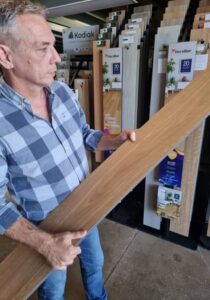
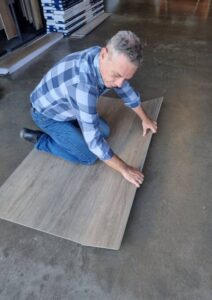
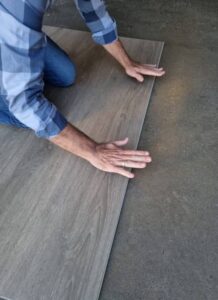
Installation Steps
- First, you need to prepare the subfloor. This potentially painstaking step is crucial to guarantee that there are no flaws on the subfloor. The process can take hours, perhaps even longer than the installation of the product itself, depending on the state of the subfloor. If the subfloor is in a particularly bad way, you may need to engage a professional. It is critical for the longevity of your floor that this process is not a shortcut.
- The next step is to apply your underlay to the subfloor. You can skip this step if you are using a hybrid floor. The underlay is a thin layer of resilient foam or rubber, that prevents the flooring from making contact with the subfloor. It will also stop any grit that you cannot see as you install the floor crunching between the flooring and the subfloor.
- Your next job is now to assemble the planks. You have to begin on one wall and continue across the opposite wall. There should be a slight gap along the walls when installing the floorboards. This space is essential since the flooring can expand and contract depending on the humidity and temperature. Installation guides provide the information.
- You can hide the gaps around the perimeter using your existing skirting boards. If you choose not to remove your skirting, you can instead install beading known as ‘scotia’.
Floated floors are not fixed. You do not have to nail or glue them to the subfloor; hence the name “floating.” It’s what makes them easy to install since you can unlock them from each other and try again if you have made a mistake. If you install the product correctly, they will withstand whatever you throw at them in everyday life. For more flooring installation tips we recommend this post.

Expert Insights From Dean Billett
28+ Years of flooring industry experience
My biggest concern with floating floors is if subfloor preparation has been done correctly or not. If the subfloor exceeds a 3mm tolerance variation, it causes problems, such as snapped joints, buckling, and noise issues due to air pockets under the floor. There are rarely any complications if the floor is completely flat or within 3mm.
The installation itself is easly doable for a DIYer, but this is separate from subfloor preparation which is sometimes better left to a professional to complete.
A DIY person can quickly test the subfloor level by:
- Buy 2 meter or three-meter straight edge from any decent hardware store.
- Place the straight edge on the floor and view from the side to see if there are gaps in the middle.
- If you can fit a 3mm space or more between that gap, then that part of the floor needs to be levelled.
- Use the straight edge to test the whole area.
Most professionals will level the subfloor by first working from the high spot and seeing if anything can be grounded back for a quick fix. Once you know the most elevated place, the inconsistencies in the floor are marked out based on height from there using the straight edge and a measuring device.
Is It Right for Your Home?
To get the best out of a floating floor, always choose wisely. Remember too, that the cost of installation of a cheap floating floor is often the same as installing a better one. That means that if you have to replace a cheap floor, it becomes far more expensive than putting down a quality one the first time.
You can talk to Online Flooring Store before you buy to get advice, as well. Here at Online Flooring Store, we have knowledgeable people who can help you find the perfect floor for you and your home. Contact us today!
Frequently Asked Questions About Floating Floors
It depends on the floating floor type. Hybrid flooring is completely waterproof and perfect for wet areas like bathrooms and laundry. Laminate generally isn't unsuitable unless specifically labelled as waterproof (like Aqua-Shield laminate).
Engineered timber and bamboo should be avoided in bathrooms. Whatever type you choose, always seal the perimeter with silicone in wet areas to prevent water from seeping underneath.
Squeaks and hollow spots usually indicate subfloor issues. Try sprinkling talcum powder at the noisy joint for minor squeaks to reduce friction.
For hollow spots, you may need to disassemble to that point and check if there's debris underneath or an uneven subfloor. Remember, no floating floor will ever eliminate the hollow sound; it's inherent to the installation method. Quality underlay helps but won't eliminate it entirely.
At a minimum: a 2-3 meter straight edge for checking subfloor levelness, a measuring tape, utility knife, hammer, tapping block (never hammer directly on boards!), pull bar for tight spots near walls, spacers for expansion gaps, saw (circular, jigsaw or miter), and knee pads.
You can use a score-and-snap method instead of sawing for hybrid or laminate. Don't forget safety gear like gloves and eye protection when cutting.
Purchase 10% extra for straightforward rectangular rooms and 15% extra for complex layouts with many corners or odd shapes. This accounts for cuts, waste, and potential mistakes. While floating floors are more forgiving for DIYers (you can unlock and redo sections), having extra is crucial.
Also, consider buying a few extra boxes to store for future repairs, as product batches can vary in colour and finding an exact match years later can be impossible.


